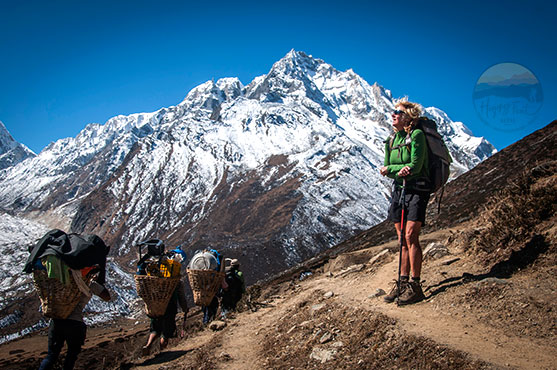-
Sunday - Friday: 9 AM - 4 PM
Tsum and Manaslu Circuit Trek
Explore some of the Last Remaining Shangri-la around Tsum (the Valley of Happiness) and Manaslu.
Trip Highlights:
Join us on a journey into Tsum Valley, the valley of happiness, combining the Manaslu circuit trek. Tsum Valley is a hidden valley between Nepal and Tibet in the shade of Manaslu and Ganesh Himal. Explore ancient Buddhist culture, religion and life. Trek to a least visited area away from a popular trekking route. Traverse enchanting woodland and barren high country with scenic landscapes. Marvel at the beautiful views of picturesque landscapes and the grand peaks of the Manaslu, Ganesh and Annapurna ranges. This is an adventure combined with a cultural trek to the far northern areas of Gorkha district and Mid-Western Himalaya. Enjoy the glamorous scenery from the start to the end of these beautiful walks. Explore the impressive cultural villages with Buddhists and Hindus. But what truly sets this trek apart is the variety of terrains you will experience, from low, warm areas to hills and an arctic zone of ice and glaciers. It is a journey that will keep you on the edge of your seat, excited for what is in next bend?!!
This extraordinary journey to Tsum Valley and the Manaslu Circuit, including an excursion to Ganesh Hima Base Camp, offers the opportunity to explore some of the last remaining Shangri-la in the shades of Ganesh, Sringi, Manaslu and Annapurna Mountains. The Tsum Valley, also known as the Valley of Happiness, is filled with natural beauty and a rich cultural heritage. It provides a rare glimpse into ancient Buddhist traditions and a life largely untouched by modernity. This unique cultural experience, with its ancient Buddhist traditions and a way of life largely untouched by modernity, is sure to intrigue and inspire all who are on this journey.
Tsum Valley and Manaslu Circuit Trekking takes you through enchanting woodlands and stark high-altitude terrain, presenting breathtaking views of the majestic Manaslu, Ganesh Himal, and the Annapurna range. As you traverse this least-visited area, you will experience the warmth of local cultures, shaped by a blend of Hindu (in the lower valleys) and Buddhist influences, from the spirited Magar communities to humble Gurung and Tsumba tribes. You will have the opportunity to participate in local festivals, witness traditional ceremonies, and learn about the customs and traditions of these communities. The variety of trekking experiences, from enchanting woodlands to stark high-altitude terrain, will surely excite and inspire the adventurous spirit in you.
Throughout the trekking, participants can expect a different range of daily walks, averaging between 4 to 8 hours, accommodating various levels of trekking experience. The trekking encompasses diverse terrains, culminating with a climb to the Larke La Pass at 5,135 meters, the highest point of the trek, with grand vistas of Himalayan Peaks, including the Annapurna Range. Lodging options are comfortable hotels in Kathmandu and typical local lodges along the trek, each offering an authentic taste of Nepalese and Tibetan hospitality. These lodging options, designed in their cultural flow, provide a comfortable and relaxing stay, ensuring you feel at ease and well taken care of.
The Tsum Valley and Manaslu Circuit Trekking is a year-round destination, but the ideal times are spring and autumn when the weather allows for crystal-clear vistas all day and night, and spring brings the blossoming rhododendrons. The summer offers the vibrancy of lush highland meadows, green fields and many lively villages. With a trip duration of 267days, this expedition promises a blend of cultural immersion and unparalleled natural beauty, making it a trek to remember long after you return home.
NOTE: The following staff and equipment get included for the tented trek.
The Spring and the fall are always the best time to trek to the Manaslu region. However, the fall/autumn season, from September to November, is undoubtedly the best time to visit Nepal. The weather remains crystal clear, with breathtaking views of the Himalayas and the landscapes. However, it is colder at high altitudes during both seasons.
Theoretically, spring is the second-best, but spring is the first-best season for many. Spring is more interesting as the rhododendron and wildflowers blossom in the mid-hill region of Nepal, and the Bhimthang area is one of the rhododendron sanctuaries.
The summer, monsoon time for Nepal, is also a beautiful time to visit the high dry land such as Manaslu. The build-up of monsoons and clouds with rain feed the highland and turn the meadows into lush green valleys and hills. In summer, the high plateau gets carpeted with yellow and multi-coloured flowers and beautiful streams, and medicinal plants feed the Yak and Sheep grazing in the region. Summer is also the time of the year when the villagers who migrated temporarily to lower land or travelled to other destinations for work and business return home for agriculture and animal husbandry.
The winter temperature in the Upper Manaslu region may drop to -17 degrees from sunset to sunrise. The daytime temperature remains 0 to 18 degrees. The local people of all villages live there year-round. December to February is the business time for the people of the upper valley. They come with their hand-knitted sheep wool sweaters, bag, cap and belts and travel to Kathmandu and even India for business.
